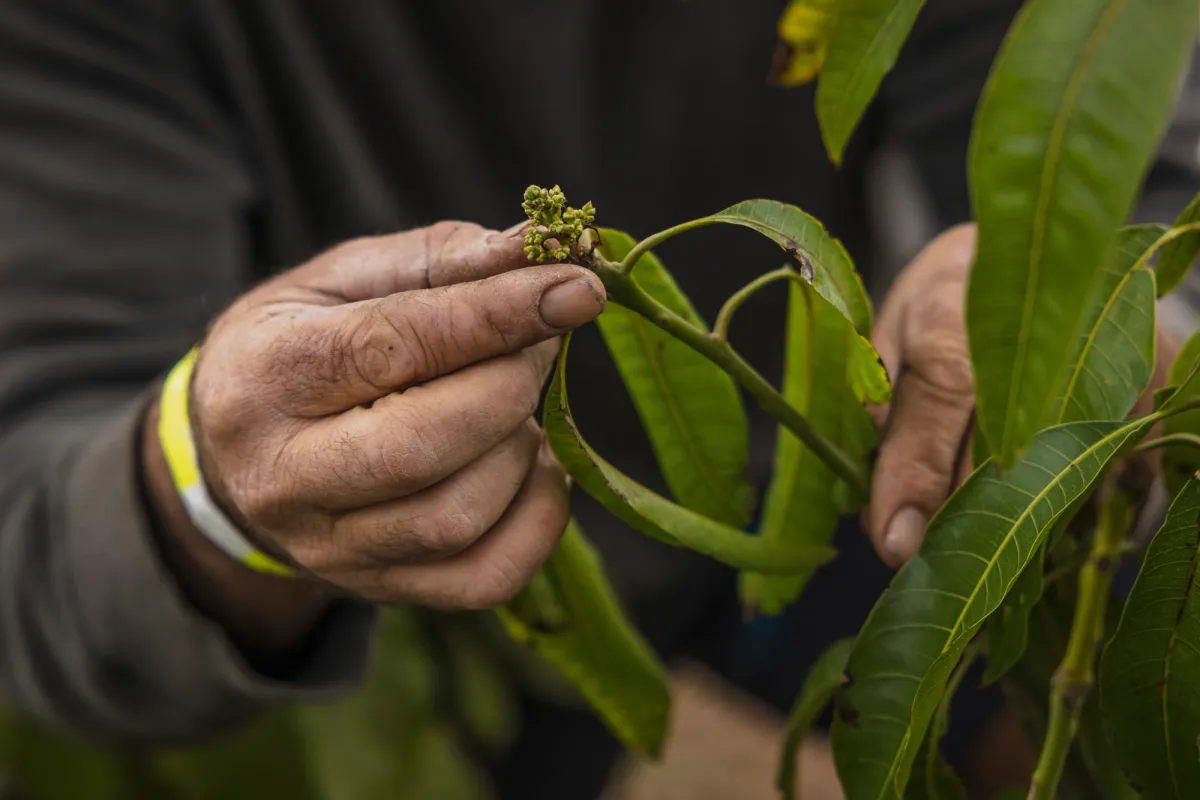CALIFORNIA, USA — In a world of worsening heatwaves, flooding, drought, glacial melting, megafires and other calamities of a changing climate, Gary Gragg is an optimist.
As California warms, Gragg — a nurseryman, micro-scale farmer and tropical fruit enthusiast — looks forward to the day that he can grow and sell mangoes in Northern California.
“I’ve been banking on this since I was 10 years old and first heard about global warming,” said Gragg, 54, who has planted several mango trees, among other subtropical trees, in his orchard about 25 miles west of Sacramento.
Gragg’s little orchard might be the continent’s northernmost grove of mangoes, which normally are grown in places like Florida, Hawaii and Puerto Rico.
Northern California’s climate, he said, is becoming increasingly suitable for heat-loving, frost-sensitive mango trees, as well as avocados, cherimoyas and tropical palms, a specialty of his plant nursery Golden Gate Palms.
“Climate change isn’t all bad,” Gragg said. “People almost never talk about the positives of global warming, but there will be winners and losers everywhere.”
Mangoes may never become a mainstream crop in the northern half of California, but change is undoubtedly coming. Hustling to adapt, farmers around the state are experimenting with new, more sustainable crops and varieties bred to better tolerate drought, heat, humidity and other elements of the increasingly unruly climate.
In the Central Valley, farmers are investing in avocados, which are traditionally planted farther south, and agave, a drought-resistant succulent grown in Mexico to make tequila.
In Santa Cruz, one grower is trying a tropical exotic, lucuma, that is native to South American regions with mild winters. Others are growing tropical dragonfruit from the Central Coast down to San Diego.
Some Sonoma and Napa Valley wineries have planted new vineyards in cooler coastal hills and valleys to escape the extreme heat of inland areas. And several Bay Area farmers have planted yangmei, a delicacy in China that can resist blights that ravage peaches and other popular California crops during rainy springs.
Near the town of Linden, farmer Mike Machado, who served in the state Assembly and Senate from 1994 to 2008, is one of many growers in the arid San Joaquin Valley who have replaced some stone fruit and nut trees with olives, historically a minor California crop mostly produced in Mediterranean nations.
“We’re adjusting for survival,” Machado said.
Climate change essentially means that Southern California’s conditions are creeping north up the coast and into the valley, while Oregon and Washington are becoming more like Northern California. Precipitation, winds, fog, and seasonal and daily temperature patterns — all of which determine which crops can be grown where — have all been altered.
“With climate change, we’re getting more erratic entries into fall and more erratic entries into spring,” said Louise Ferguson, a UC Davis plant physiologist.
Researchers predicted that “climatic conditions by the middle to end of the 21st century will no longer support some of the main tree crops currently grown in California.…For some crops, production might no longer be possible.”
“Fruit growers all around the world in the warm regions are worried about” warming trends, particularly in winter, said Eike Luedeling, a coauthor of the study and a professor of horticultural sciences at Germany’s University of Bonn.
UC Davis researchers are at the cutting edge of the push to adapt, working to make California’s lucrative walnut, pistachio and stone fruit orchards more resilient by selectively breeding for heat, disease and drought tolerance.
About three-quarters of the nation’s fruits and nuts are grown in California, but fruit and nut trees are among the most vulnerable crops to climate change.
Luedeling’s research, for example, suggests that high winter temperatures could severely reduce walnut yields about once a decade.
Katherine Jarvis-Shean, an orchard advisor with the UC Agriculture and Natural Resources program, said that effect will be magnified farther south: “That’s probably one in five years in the southern San Joaquin Valley,” she said.
Searching for genetic resilience
Pistachios have grown to one of the state’s mightiest crops, with acreage of mature trees now covering more than 400,000 acres. The 2021 harvest totaled about 577,000 tons and was valued at nearly $3 billion.
Now crop scientists are working to save these valuable orchards from the effects of warming.
Warmer winters can cause male varieties to bloom and release pollen too late, after the female flowers have opened. This means less pollination and less fruit, and in 2015 many orchards suffered total crop failure.
Patrick Brown, a UC Davis nut crop breeder, said farmers have solved this problem, at least for now, by grafting additional male varieties with different blooming schedules into the groves. “It’s a fairly easy hedge against that problem (of warmer winters),” he said. “No matter when the females bloom, there should be some pollen for them.”
Breeding programs to reduce nuts’ chill requirements are underway, but Brown said these trees have trade-offs: They tend to wake up earlier from winter dormancy, which can put premature foliage at risk of frost damage and expose young leaves to rainfall that causes blight.
WATCH RELATED: Wild Willow Farm still recovering after floodwaters destroyed their crops:


